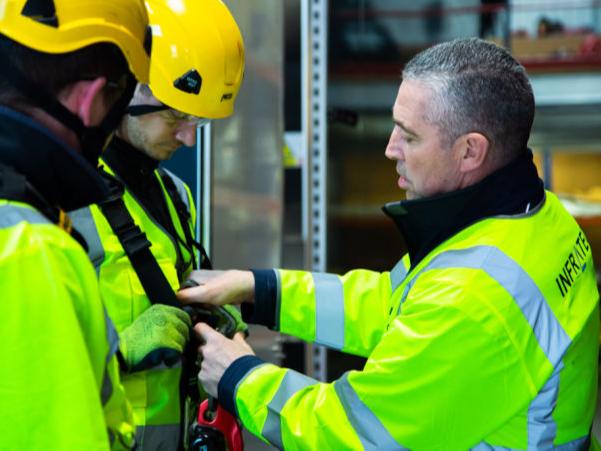If you’re not clued up about what’s involved with confined space training as well as height safety training, this article will certainly provide you with the information you need. This is especially if you’re intending on carrying out one of the courses sometime soon to add to your knowledge of working within these areas of the industry. To begin with, we’ll cover what is confined space rescue along with what is height safety.
When referring to a confined space, this involves anything which is enclosed and has little space. Typically, these areas include a chamber, vessel, container or anything similar that is obviously small and can be risky as it creates conditions whereby it’s easier for people to come into harm such as with an accident. Normally, the reason for an accident to become likely is due to lack of oxygen in the small space, or there is a presence of harmful gases, fumes, high temperatures and/or a flammable atmosphere. What’s just been listed is ultimately what characterises a small space and therefore is what can be expected for people to deal with, once they’ve undergone confined space training.
To work within confined spaces and carry out confined space rescue, employees must hold the correct and legal qualifications gained from confined space training in order to enter these areas. Additionally, before anyone enters an enclosed space, even if they have the required training to do so, a risk assessment must be carried out in accordance with health and safety laws. Some of the factors which are looked at for a risk assessment include looking at what things are inside the enclosed environment which poses a risk such as:
-
Is there a lack of oxygen?
-
Is the structure of the space abnormal or hard to navigate?
-
What are the details of the confined space rescue at hand?
-
Are there any contaminants present in the space?
-
Are there any flammable substances present?
With height safety training, this involves training people up to work safely on ladders, scaffolding or any platforms which are suspended high above the ground. And so, workers who undergo this training will obtain the correct knowledge and qualification for working at heights. As most deaths occur from a height at the workplace, it’s vital for employees to be qualified to work at height and understand the regulations which are in place. The best way for employees to remain safe at work is through a height safety training course.
If you intend on carrying out a height safety course, you can expect what it means to be working at heights, the risk assessments you need to be aware of as well as being able to identify hazards. Alternatively or as an addition to height safety, ladder safety training is available and this will allow you to be able to conduct safety inspections, risk assessments and how to use ladders safely.
Hopefully, the above information has provided you with enough knowledge and insight to understand what you can get from this type of training. Both courses are great additions to your qualifications to work with a range of different industries who will need your expertise. Due to the current, volatile nature of the job market, any additional advantage you can give yourself can represent the potential to secure a highly-sought after role. There may be applicants with the exact same level of experience and education as yourself, so a working at height qualification can be the deciding factor between you and another candidate - make sure you don't sell yourself short by not giving yourself the best possible chance for a job.












No Comments